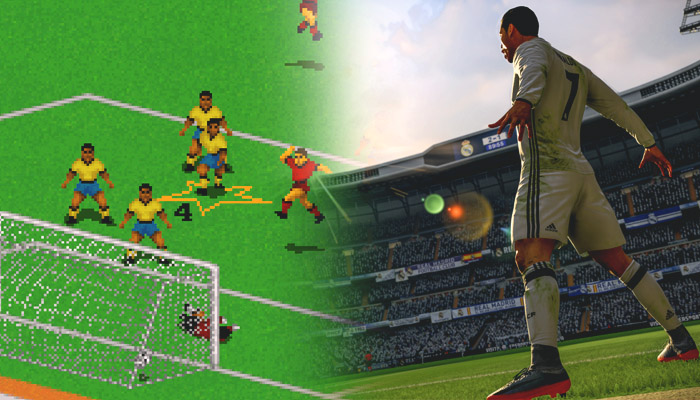Sports titles have always been a big part of the video game industry. Early sports games featured simple graphics and basic mechanics that were barely identifiable as real athletes or teams.
Nevertheless, if you asked someone who played these tiles what they thought of them, chances are you’d get an overwhelmingly positive response. Titles like Tecmo Bowl and FIFA 94 only had basic graphics that left a lot to the gamer’s imagination. Still, their gameplay was entertaining, even if it wasn’t very realistic.
There’s no denying that sports games have come a long way since those early days. These modern titles employ advanced graphics, physics, and artificial intelligence (AI) in a way that makes players feel like they’re participating in an actual sporting event.
Realism has become the name of the game in these titles as gamers have increasingly sought authentic experiences on the virtual playing field. In this article, we look at the growing popularity of realism in sports video games.
Why Gamers Want Realism
Certain games lend themselves to realism more than others. If you’re playing a sports game, you want to feel like you’re part of the action and hope it’ll accurately represent what you see when you watch your favorite team play in person or on the TV screen.
It’s not just sports games either; in genres like casino games, we’re also seeing a push toward more realism. As casinos have increasingly gone online, players are looking for an experience that’s similar to what they’d experience in a brick-and-mortar establishment.
In many ways, game designers have been able to live up to these expectations. Let’s take online blackjack as an example. As gamers sit down at a virtual table in an online casino, the cards are dealt with with smooth animations, resembling the experience of playing the popular game in real life.

In much the same way, sports games immerse players in a realistic environment that makes it feel like they’re really part of the game. In esports, these games must have accurate mechanics to ensure everything is fair and skill-based because even a small discrepancy can change the results.
Games with career modes and management simulations have also become popular with gamers. In games like Football Manager and NBA 2K’s MyGM mode, players are tasked with making strategic decisions that have meaningful consequences on the outcome of the game.
The Evolution of Realism in Sports Video Games
Early sports video games were all about simplicity, and for many gamers, that was enough to keep them entertained. Nobody would claim that the graphics in games like Tecmo Bowl and FIFA 94 were anything but rudimentary, but that didn’t take away from their fun factor. Developers became more ambitious in designing sports titles as better technology became available to them.

In the late 1990s and early 2000s, realism really began to take off. Franchises like NBA 2K, FIFA, and Madden NFL used highly capable physics engines, motion capture technology, and AI systems to make these titles feel more lifelike.
Gone were the days of basic player movements; in these games, players move more accurately, and the ball dynamics are more realistic. Furthermore, computer-controlled opponents made smarter in-game decisions, adding to the realism of these games.
Key Features That Enhance Realism
Quite a few technological advancements have made it possible for developers to increase the realism of sports video games, one of the biggest being motion capture technology. This technology has enabled developers to record accurate athlete movements, which has resulted in the fluid and lifelike animations that we’ve come to know in modern games.
Advanced physics engines have played a big role in making ball movement, player collisions, and things like weather conditions appear as they would in an actual match.
There’s been a lot of talk about artificial intelligence (AI) of late, and it has played a significant role in the creation of smarter computer-controlled opponents and teammates that are able to use real-world strategies to make games more challenging and authentic.
 FIFA Infinity The Absolute FIFA Site
FIFA Infinity The Absolute FIFA Site



